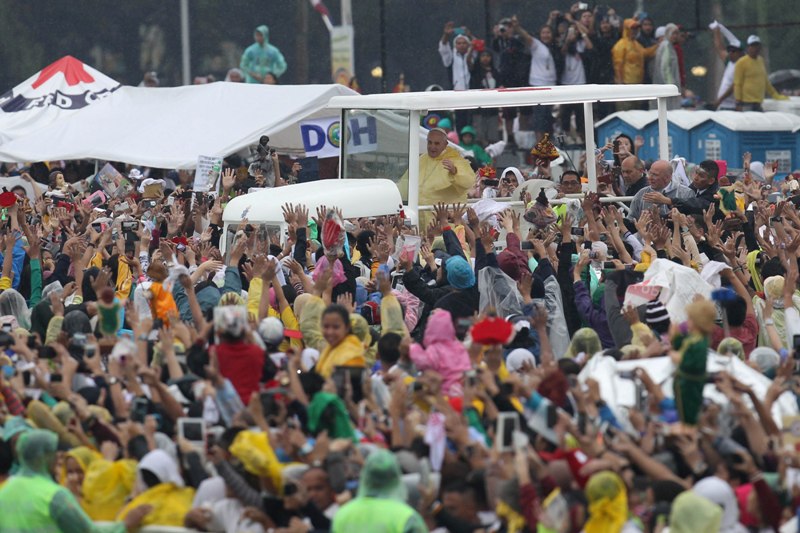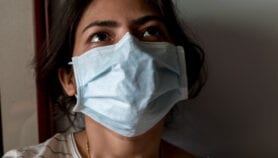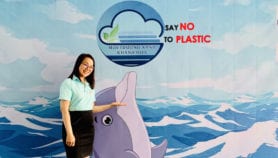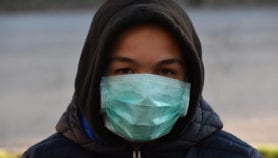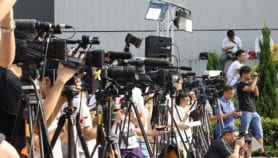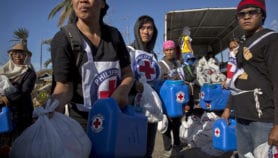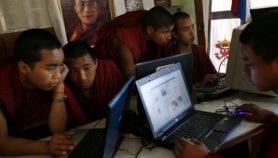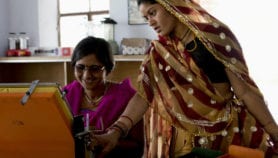By: Crispin Maslog
Send to a friend
The details you provide on this page will not be used to send unsolicited email, and will not be sold to a 3rd party. See privacy policy.
The day after Pope Francis said his farewell mass on 18 January at the Rizal Park in Manila to wind up a historic five-day visit, two leading Philippine newspapers reported that six to seven million people turned up.
International news agencies picked up these estimates. Reuters used the headline: “Pope Manila Mass drew record crowd of 6-7 million: Vatican”.
In a report, risk consultancy firm PSA said that Vatican officials are among the worst offenders when it comes to estimating crowd figures. During Pope Francis’ visit to Brazil in 2013, Vatican officials reported that 3.7 million people attended his 28 July mass on Copacabana beach in Rio de Janeiro. However, Datafolha, one of Brazil's top polling agencies, estimated the crowd at only 1.2 million to 1.5 million. [1] In Bangkok, mass media reported that protest marches from 2010 to 2013 drew crowds of 100,000 to 300,000. But who did the counting?
In Hong Kong, the annual candlelight vigil on 4 June 2014 to mark the twenty-fifth anniversary of the Tiananmen Massacre in China was estimated by organisers at 180,000 and by police at 99,500. Why the discrepancy? [2]
In Cairo, some news media reported that 30 million rallied against the government of Mohammed Morsi in July 2013 in the “biggest” uprising in history. Other news organisations estimated 14 million demonstrators. The crowds were indeed huge, but how huge? [3]
Accurate crowd estimates matter
Do accurate estimates of crowds at public events really matter? I think they do in the interests of accuracy, truth and history. Take the estimate for the 1995 crowd at Pope John Paul II’s World Youth Day mass in the Philippines. It was put at five million and recognised by the Guinness Book of Records. This crowd estimate was never challenged and now it is part of history, although many today think it was exaggerated.
Journalists should be the guardians of accuracy in the matter of crowd estimation, and they can do this if they go the extra mile in the interests of responsible reporting.
To get credible crowd estimates, journalists can follow a “science” in estimating crowds, if we define science as being accurate, precise and systematic. So how does this “science” work? Experts suggest the following steps: [3]
1. Start by answering some basic questions. Find out the size of the space where the event is held. Just Google for the information from official documents. How many square metres does it occupy? Use Google Earth. Then ask yourself: What proportion of the space is occupied? Is it 100 per cent, 75 per cent, 50 per cent?
2. Next, apply the Jacobs formula. University of California journalism professor Herbert Jacobs designed the formula in the 1960s during the Vietnam War protests.
He counted the students that conducted almost daily protests on the university campus just outside his office window. Since the campus was arranged in a grid, Jacobs counted students in a few squares. He computed the average number of students per square, then multiplied that by the total squares.
He also defined densities as “light crowd” (one person per 10 square feet), “dense crowd” (one person per 4.5 square feet), and “very dense crowd” (one person per 2.5 square feet).
To paraphrase the Jacobs rule in the metric system: In a light crowd where people are at arm’s length from one another, estimate one person per square metre. In a dense crowd, it’s about half that, or two people per square metre. And in a very dense crowd, compute four people per square metre. [1]
3. Then use photography. Refer to aerial photos of the crowd and apply the Jacobs method. The densities of the crowd will be uneven and parts of the crowd will remain hidden behind trees, buildings or darkness. Make allowance for these areas in the computation.
Estimating size of crowds
Let us apply these steps to estimate the crowd at Pope Francis’ Sunday mass Rizal Park in Manila on 18 January.
According to the Philippine National Parks Development Committee, Rizal Park has an area of 58 hectares or 580,000 square metres. By looking at aerial photographs of the mass that day, approximately one-third, or 193,000 square metres, were jampacked. This is the open area at the centre of the park, and the extreme density is obvious from photographs. If we calculate the crowd at four people per square metre, there would be 772,000 people in this area.
Another one-third of the park, 193,000 square metres, composed of roads and sidewalks around the park within a three-kilometre radius, can be considered densely occupied. If we estimate two people per square metre, there would be 386,000 people in this sector.
Another third of the park, 193,000 square metres, comprise areas under the trees, around and inside buildings within a radius of three kilometres, which can be considered lightly occupied. If lightly occupied means one person per square metre, there would be 193,000 people in this area.
If we add the totals from the very densely, densely, and lightly occupied areas, the total would be 1,351,000 people in Rizal Park.
But some claim that the crowds overflowed from Rizal Park into Roxas Blvd., going northwest from the park. If we go seven kilometres from Rizal Park on Roxas Blvd. up to the Mall of Asia, we can cover a bigger area by multiplying seven kilometres (or 70,000 metres) long by 20 metres wide (consisting of the boulevard and its sidewalks), or 1,400,000 square metres.
If we consider this as densely occupied that afternoon, we can multiply it by two to come up with 2.8 million more people. We add this to the 1.35 million, and we get 4.15 million total for the Rizal Park and Roxas Blvd. crowds that day. This is a generous count, but still way below the reported estimates.
So the next time you read headlines about record crowds, it is best to count to ten before believing them.
Crispin Maslog is a Manila-based consultant for the Asian Institute of Journalism and Communication. A former journalist, professor and environmental activist, he worked for the Press Foundation of Asia and the International Rice Research Institute.
This article has been produced by SciDev.Net's South-East Asia & Pacific desk.
References
[1] THE MEDIA, How to size up a crowd, a PSA risk consultancy report (2015)
[2] Jessica Weiss How reporters can estimate the number of people in a crowd (IJNet, 24 July 2013)
[3] Wall Street Journal (Asia) Tiananmen Square Anniversary: Hong Kong Vigil Exposes Political Fractures Tensions Between Hong Kong and Mainland China (Wall Street Journal, 4 June 2014)


